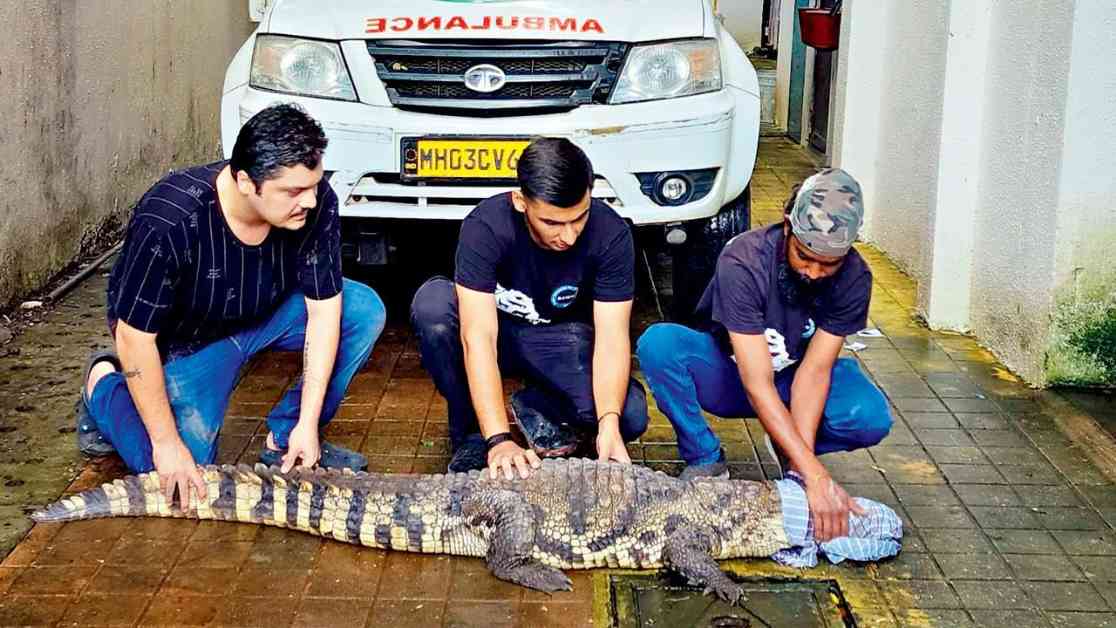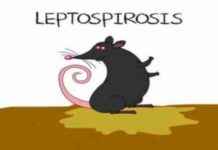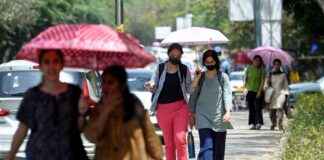Rescued Nine-Foot Indian Marsh Crocodile in Mumbai’s Mulund: A Success Story
Residents of a Mulund housing society in Mumbai were in for a surprise recently when a nine-foot-long Indian marsh crocodile made an unexpected appearance in their vicinity. Thanks to the prompt and efficient efforts of the Forest Department and the NGO RAWW, the reptile was successfully rescued and returned to its natural habitat in the wild.
Pawan Sharma, the Honorary Wildlife Warden of Thane and President of RAWW, provided insights into the incident, stating, “On Sunday morning, a distress call was received by the Forest Department’s control room regarding a large crocodile spotted near Nirmal Lifestyle in Mulund West. Joaquim Naik and Kunal Thakkar from our RAWW rescue team collaborated with forest officials to assess the situation and carry out the rescue operation.”
Following the rescue, the female crocodile underwent a medical examination conducted by veterinarians Dr. Priti Sathe and Dr. Kirti Sathe, who confirmed that the reptile was in good health and fit for release. The crocodile was then returned to its natural habitat with the assistance of the Mumbai Forest Department and the RAWW team.
Sharma mentioned, “The crocodile is believed to have been displaced from either Tulsi or Vihar Lake. Security personnel at the site spotted the animal and promptly informed the Forest Department. While such sightings or rescues may appear uncommon, similar incidents have occurred in previous years.”
The Indian Marsh Crocodile, also known as the Mugger Crocodile, is native to the Indian subcontinent, including countries like India, Pakistan, Nepal, Sri Lanka, and parts of Iran. This species thrives in freshwater environments such as rivers, lakes, ponds, and man-made reservoirs, preferring freshwater habitats over saline environments unlike its saltwater counterpart.
Historically widespread across the subcontinent, the population of the Mugger Crocodile has faced a decline over time due to various factors including habitat destruction, hunting, human encroachment, and loss of prey. As a top predator, the species plays a crucial role in maintaining the ecological balance of its environment, underscoring the importance of conservation efforts amidst escalating human-wildlife conflicts.
Subheadings:
1. Unexpected Visitor: Nine-Foot Indian Marsh Crocodile in Mulund
2. Successful Rescue Mission by Forest Department and RAWW
3. Conservation Challenges and the Importance of Preserving the Mugger Crocodile
The incident in Mulund serves as a reminder of the delicate balance between human settlements and wildlife habitats in urban areas. It highlights the significance of collaborative efforts between wildlife authorities and local communities to ensure the safety of both humans and animals in shared spaces. The successful rescue of the nine-foot Indian marsh crocodile is a testament to the dedication and expertise of wildlife conservationists and organizations like RAWW in safeguarding the rich biodiversity of our natural surroundings.
As we continue to witness instances of human-wildlife interactions in urban settings, it becomes imperative to raise awareness about coexisting harmoniously with the wildlife that inhabits our surroundings. Through education, conservation initiatives, and proactive measures, we can strive to create a sustainable environment where both humans and animals can thrive together.
In conclusion, the rescue of the nine-foot Indian marsh crocodile in Mulund stands as a beacon of hope for wildlife conservation efforts in urban landscapes. It serves as a poignant reminder of the need to protect and preserve the natural habitats of our native species, ensuring a future where wildlife and humans can coexist in harmony. Let this success story inspire us to continue our efforts in safeguarding the diverse flora and fauna that enrich our lives and our planet.




















